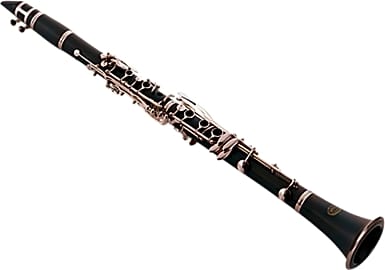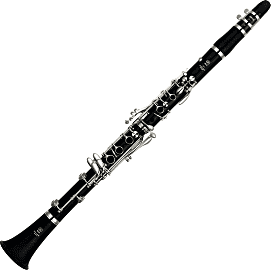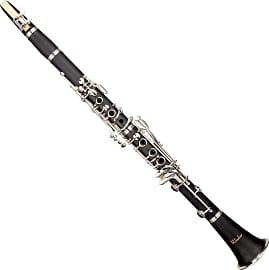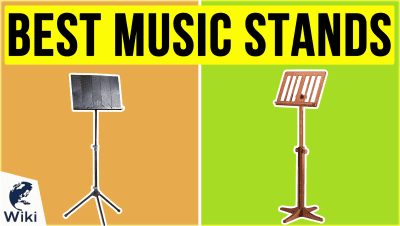The 10 Best Student Clarinets

This wiki has been updated 36 times since it was first published in October of 2016. Whether your youngster is just starting out on a woodwind journey or needs a replacement for the upcoming year, one of these student clarinets should fit the bill nicely. They are specifically crafted to be easy for beginners to play and hold, so that learning is frustration-free. As a bonus, they are priced lower than pro models, yet are still appropriate for many musical styles and settings. When users buy our independently chosen editorial recommendations, we may earn commissions to help fund the Wiki.
Editor's Notes
June 25, 2019:
Although the Buffet B12 was discontinued in 2016, we still felt it wise to include it in the past, as it's long been a popular favorite; however, it's now becoming more difficult to find, as the Buffet Premium and Buffet Prodige take its place. For this reason, we have removed it in favor of the aforementioned models. The two are quite similar to each other in many respects, but there are a few small differences, namely the fact that the Prodige has an adjustable thumb rest, whereas the Premium has a fixed thumb rest. It's tough to say which one is necessarily better, as the choice comes down to the preference of the individual player.
Of course, neither of these instruments is particularly cheap and may in fact cost more than many people want to invest in a student clarinet. That's why we have given the Jean Paul USA CL-300 the number one spot — it's less likely to pain your wallet, but it's still a reasonable, durable choice. We have also opted the keep the Lazarro 150-BK-L as a super-low-budget option, but it's more of a last resort for those who really need to stay in the sub-$100 range. You can expect that it will end up needing to be replaced sooner than many others. But it does come in quite a stunning array of colors, so if you're trying to encourage a reluctant player, it could be helpful.
Special Honors
Buffet Crampon Prodige For serious beginners, the Buffet Crampon Prodige offers the little touches that will make playing feel effortless, including leather pads and an adjustable thumb rest. But it also requires more care and attention than many super-robust student models, so it may not be the best option for players who won't take the time to be cautious about cleaning. buffet-crampon.com
Selmer 1400B The Selmer 1400B comes from one of the most well-known names in student clarinets, and although it's something of an investment, it will easily transition with a player into the intermediate stage. But playing it shouldn't be a struggle for even the greenest of novices, or for those with small hands, thanks to a wide pinky key design. conn-selmer.com
Differences Between Student And Pro Clarinets
Whereas a pro model will have a rich, deep, and warm sound, a clarinet for a beginner might strike the ear as bright and almost brassy.
If you’re just jumping into the world of buying a clarinet, you might be wondering what, exactly, makes a beginner instrument so much different from a pro model. After all, those in the latter category can cost more than 10 times what an entry-level clarinet costs, yet they look incredibly similar. Although much of the variance, such as playability, is best appreciated by a musician, there are a few differences that anyone can see.
For instance, the materials used for each type are usually not the same. A student clarinet generally has a hard rubber or plastic body, whereas a pro version will often feature a body made from premium wood. This is because beginners, especially those who are younger, may not be ready to care for more sensitive materials, which require careful maintenance and regular cleaning. The keys and pads on a student clarinet can also usually take more abuse while requiring fewer adjustments.
Manufacturers choose tougher materials for student clarinets not just for durability, but also because they're more cost-effective. Such materials don’t require as much investment, and to drive down the price further, student clarinets are generally mass produced, not hand crafted. Overall, this leads to an instrument that is strong enough to hold up to the first one or two years of rough treatment as the player learns about proper care.
One tradeoff for the greater durability and lower price of a student clarinet is the sound. Whereas a pro model will have a rich, deep, and warm sound, a clarinet for a beginner might strike the ear as bright and almost brassy. It will lack the roundedness of tone that you’d expect from any type of clarinet music, from jazz to rock. In general, this isn’t too much of an issue, though, because a beginner doesn’t have the skills to control the tone yet.
Another difference you’ll notice is that most student models come bundled with a range of accessories, such as a music stand. Because those purchasing pro models most likely have been playing for some time, it’s expected that they’ll already have these items, making the bundling unnecessary. Also, this allows manufacturers or sellers of pro models to focus entirely on the quality of the instrument and individuality of the player.
Accessories For Beginning Clarinetists
The bundled accessories of a student clarinet help lessen the initial investment and ensure that the player has everything he or she needs to get started. If you’re brand new to the woodwind world, however, you might find this help to be a hassle, as you try to figure out the what and why of each item. To put you on more solid ground, we’ve outlined a few of the most important and common accessories.
If you put them in a bag, they’d bump against each other, possibly pushing the keys out of alignment or even cracking the pieces.
First come the reed, mouthpiece, and ligature. The ligature holds the reed to the mouthpiece so that the reed can vibrate as you blow into the instrument, which is what creates the sound. Reeds are numbered from 1 to 5, with 1 being more flexible and 5 being more stiff; most beginners start out on a medium 2 or 3. Reeds vary in several other ways, such as shape, but most clarinetists won’t need to worry about these until they have some playing experience. Note that reeds are somewhat delicate and do break, so it’s wise to always keep a couple of extras on hand.
Next comes the case. The clarinet has four other parts in addition to the mouthpiece: barrel, upper joint, lower joint, and bell. If you put them in a bag, they’d bump against each other, possibly pushing the keys out of alignment or even cracking the pieces. A case prevents such damage by keeping each piece nestled and secure for transport. Many cases also have room for accessories.
Then you have the cork grease. The clarinet’s joints are covered in cork; although this is pretty durable on student models, cork grease helps extend its life. It also makes the instrument easier to put together and take apart.
Finally, you have a cleaning cloth and swab. During playing, the clarinet picks up the oils from the player’s hands on the outside and becomes moist from the player’s breath on the inside. Putting the instrument back in the case without removing these oils and moisture will greatly shorten the instrument’s lifespan, which is why a cleaning cloth for wiping down the outside and a swab for drying the inside are crucial.
A Brief History Of The Clarinet
Unlike many instruments, the clarinet has an origin that’s relatively easy to pinpoint. Sometime around the beginning of the 18th century, instrument maker Johann Christoph Denner offered his improvement on the chalumeau, a woodwind instrument that resembles a recorder. Although the new instrument didn’t look exactly like today’s modern clarinets, it was significantly different from its predecessor in that it had a register key. Still found on today’s models, the register key is what allows the new instrument to play a greater range of notes.
As for the type of music you would expect from a clarinet player, the variety is just as wide as the number of instruments in the family.
The clarinet is, today, only one in a large family that includes instruments you may or may not be familiar with, including the piccolo clarinet and bass clarinet. In fact, the instrument that everyone calls a clarinet would be more specifically called a soprano clarinet, with the most common of these being the B-flat variety. Many serious players, as they progress, become familiar with several instruments in the family and may switch among them as their band or music requires.
As for the type of music you would expect from a clarinet player, the variety is just as wide as the number of instruments in the family. You will certainly hear clarinetists in groups that perform the baroque style of classical music popular around the time of the instrument’s invention, but clarinetists perform with many other types of groups. You’ll hear the clarinet’s rich sound in big band, swing, jazz, rock, polka, and even pop music. A few of the greats include Benny Goodman, Pete Fountain, Anton Stadler, and Giora Feidman.















